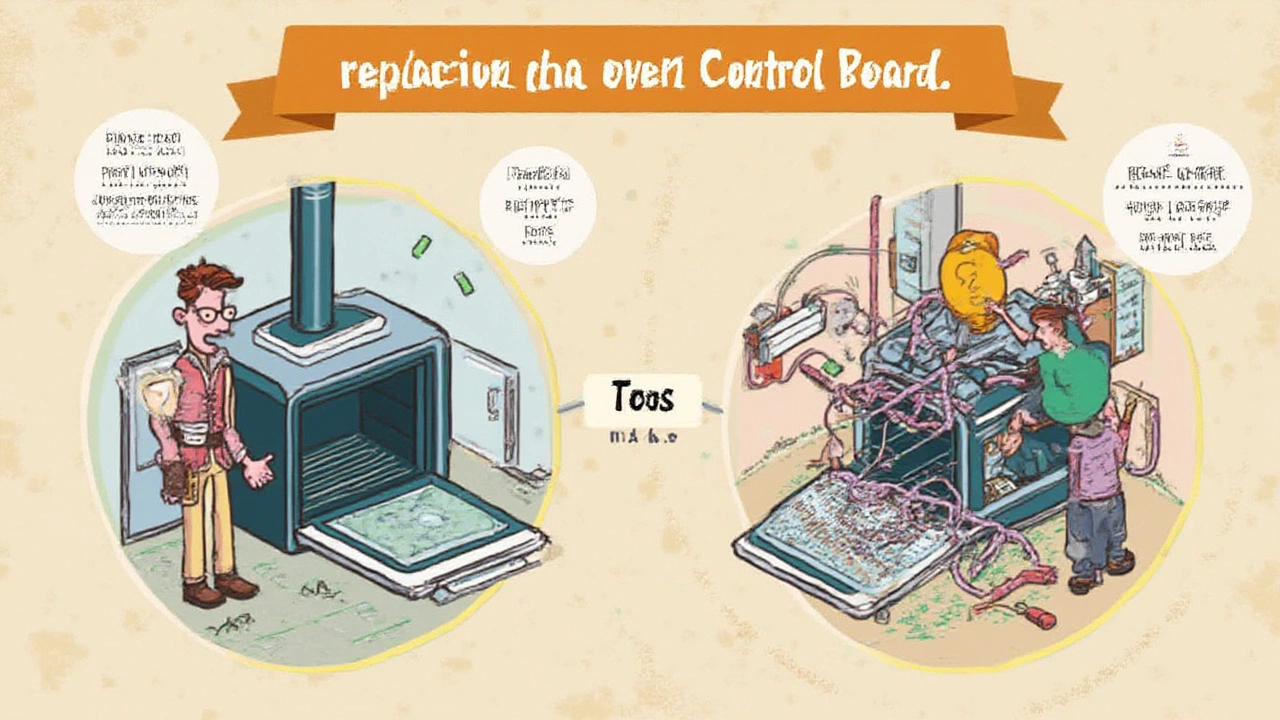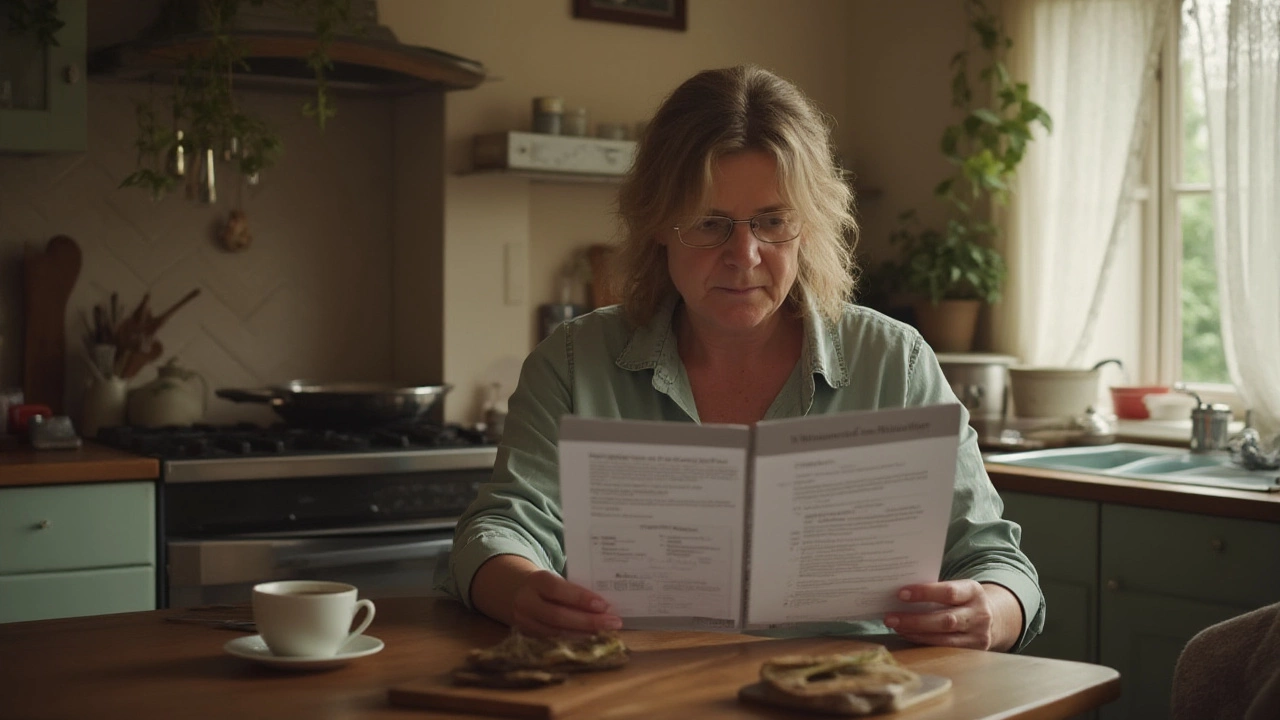If your once-faithful oven just blinks or refuses to heat up, you’re not alone. Ovens are like the silent heroes of the kitchen—until something goes wrong. That glassy-eyed digital panel, called the control board, is the oven’s brain. But when it glitches, the whole cooking show screeches to a halt. Should you bother swapping out that mysterious board, or is it a money pit? The answer isn’t one-size-fits-all, but I promise you it’s not as mysterious as it seems.
Understanding the Oven Control Board and Why It Fails
The control board is the nerve center. It takes your inputs—bake, grill, fan, temperature—and sends commands to relays and sensors, precisely telling your oven how to behave. Most modern ovens, from affordable Eurotechs to flashier Bosch models, depend on this tiny computer. When buttons stop working or the display flashes error codes (F1-1, F7, or “Err”), that’s usually the control board crying for help. These can misfire due to power surges, worn-out solder joints, steam damage (looking at you, uncovered roasts), or just age.
Plenty of people wonder if the control board is just a fancy name for a circuit that can be jiggled or resoldered for cheap. Here’s reality: once it’s kaput—dead display, random oven temps, or the oven not responding at all—it’s not a simple fix. An average board lasts seven to twelve years, based on studies by appliance repair shops in New Zealand and Australia. In humid coastal towns like Dunedin, moisture finds its way in, accelerating breakdowns.
On top of that, it isn’t just old ovens suffering. Even models under five years sometimes see early board failure, often thanks to frequent power cuts or surges. Did you know: a 2023 survey by the Association of Home Appliance Servicers revealed oven electronics are now the number one culprit for oven breakdowns—surpassing worn-out elements and burned wires.
Now, with smart ovens popping up everywhere, control boards get even fancier and less forgiving of small faults. One little part on the board blows and suddenly, the entire oven turns into a shiny cupboard until someone gets that board swapped or fixed.
Signs the Control Board Is the Trouble (Not Just the Usual Suspects)
Before shelling out for a new board, let’s weed out the easy stuff. Many oven problems masquerade as board issues. Is the oven totally unresponsive? Maybe the thermal fuse has popped, or a breaker tripped. If only one function (like grill or fan) is behaving badly, that could point to a faulty element rather than the board. Time to get methodical—nothing beats going through a short checklist:
- Is the display dead or flickering, even with power to the oven?
- Are unrelated features (clock, timer, lights) flashing error messages or running wild?
- Do you see strange codes on the display (like “F3” for temp sensor faults, “F1” for board trouble)?
- Does the oven heat randomly or fail to keep a steady temperature, but elements test fine?
- Did strong smells or loud popping noises precede the failure? That usually means a board component blew.
If you’re nodding along to more than one point, the control board likely needs attention. A qualified appliance technician will confirm with a multimeter and possibly by swapping in a working board—but those symptoms strongly point to the board itself.
Keep in mind: even seasoned repair guys sometimes misdiagnose. In 2024, Consumer NZ received over 300 complaints from homeowners who paid for a pricey control board replacement, only for a faulty door lock or $30 sensor to be the real issue. Always make sure tests rule out all alternatives. No one wants to slap down half a grand chasing phantom faults.
| Fault | Reported By NZ Servicers (%) |
|---|---|
| Control Board Failure | 34% |
| Heating Element Burnout | 28% |
| Door Latch/Switch Issues | 15% |
| Thermal Fuse/Overtemp | 11% |
| Wiring/Connector Faults | 8% |
| Other (Sensors, User Error) | 4% |

Comparing Costs: Replace the Board or the Oven?
This is where things get real. Let’s break down the price tag of replacing a control board:
- Parts: In New Zealand, control boards are rarely cheap. Expect anywhere from $180 (for basic brands) to nearly $600 (premium models or if part is only available overseas, like some Samsung or Smeg lines). Brands like Fisher & Paykel sit somewhere in the middle, usually around $250–$400.
- Labour: Even a quick board swap isn’t plug-and-play. Some ovens need to be pulled out, which means extra muscle and time. Labour runs $90–$200, depending on complexity and your local rates.
- Shipping and Wait: Sourcing the board can take days or even weeks, especially for models out of production or imported units. Some folks have had their kitchen out of use for a month waiting on that one circuit board to come from Europe.
Add it up and you’re looking at $300 minimum, easily tipping toward $700–$900 for some brands. Sounds steep, right? Especially considering you can score a decent new oven off the shelf for $900–$1,400 these days, sometimes less if you catch a sale. So where’s the logic in fixing the old one?
It depends. Is your oven high-end, built-in, and matches your kitchen fitout perfectly? Then replacing the oven control board means you keep your kitchen looking slick and avoid cabinet modifications. Maybe you have a beloved model with features you can’t get any more. Or, if you just replaced the heating element or spent money on another repair, scrapping it feels like a total waste.
But if your oven is a decade old, rusting, or has other signs of wear (worn door seals, scorched enamel, sluggish fan), paying top dollar for a new brain isn’t always smart. The new board might outlive the rest of the machine by a few months or a year, and then you’re back at square one. It’s worth running the numbers. Many appliance technicians in Dunedin say the magic cut-off is about half the price of a comparable new oven. If your repair bill stays under that, and the oven is otherwise sound, then fixing makes sense. If it creeps past, you’re buying trouble.
Tips, Trade-offs, and When to Say Goodbye
Here’s the things no one tells you on appliance forums. New replacement control boards aren’t always made like the originals. Some fit perfectly, but others are “universal”—the catch-all type that may require rewiring, or may leave the timer a bit off. Used boards from online marketplaces are an option if the new ones are extinct, but they’re a gamble. If you go this route, buy only from sellers with solid ratings and a tested guarantee—not just “removed from working unit.”
If you fancy yourself handy, you might be tempted to repair the board yourself. This sometimes works for simple faults: burnt resistors, clearly blown capacitors. There are heaps of YouTube repair tutorials and forums dedicated to oven circuit board repairs. But be honest—if you’ve never held a soldering iron and don’t have an electronics background, this is risky. Oven boards handle high voltage and mistakes can lead to way bigger safety issues. In New Zealand, repairs affecting appliance safety should really be handled by a registered electrician or authorised appliance servicer. Insurance can get sticky around DIY fixes.
Other tricks to stretch your oven’s life:
- Fit a cheap surge protector to the wall plug or have a proper power filter installed (especially if your area has nasty power spikes). This can fend off future board failures.
- Clean the oven’s cooling fan and vents regularly. Steam and gunk sneaking onto circuit boards is a surprisingly common culprit.
- Keep your model and serial numbers handy. If your oven’s less than five years old, check for warranty or recall coverage first. Some brands “quietly” extend coverage for boards due to known defects—worth a phone call.
- If sourcing a new board, shop local if possible. Kiwis in Dunedin have seen boards go missing or arrive broken when shipped from overseas.
- If in doubt, ask the tech if a reconditioned board is available. It's cheaper, and some are refurbished to last longer than the cheap new ones.
Here’s a wild stat: about 42% of oven repairs called “control board replacements” in NZ last year were actually sensor swaps, wiring fixes, or cleaning gunk off the circuit. A quick diagnosis can sometimes save you hundreds.
At the end of the day, it’s all about the numbers and what works for your family. If you value the features of your oven, have a reputable technician and the part available, and your oven’s not on its last legs, a board replacement could buy you years more roasting and baking. But don’t throw good money after bad—sometimes, the toughest call really is just buying a new oven and starting fresh.
